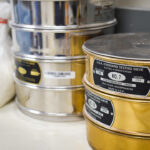Washington grain industry monitoring potential trade barriers
The Washington Grain Commission (WGC) is closely monitoring the recent announcements this week regarding tariffs, and will coordinate with the U.S. Wheat Associates (USW), Washington Association of Wheat Growers (WAWG) , National Association of Wheat Growers (NAWG), and other Pacific Northwest wheat and barley commissions as needed. The most current information on how this situation impacts Washington grain growers will be posted here as it is made available.
March 24, 2025
Proposed port fees could impact agriculture
The U.S. Trade Representative’s (USTR) office is considering imposing significant port fees on Chinese-built and Chinese-flagged vessels in an effort to address China’s dominance in global shipbuilding and logistics. While aimed at revitalizing the U.S. shipbuilding industry, these proposed fees could have unintended consequences for U.S. agriculture, including wheat and barley exports from Washington.
The WGC and WAWG recently submitted public comments to the USTR highlighting the potential impact on Washington’s farmers. With over 90% of Washington wheat exported, any disruption in shipping capacity or increase in costs could threaten market competitiveness and depress farm prices.
WGC and WAWG’s concerns are aligned with U.S. Wheat Associates and the National Association of Wheat Growers, emphasizing that the proposed fees could undermine decades of market development investments by U.S. wheat farmers. The WGC and WAWG continue to monitor the situation closely, provide educational resources as possible, and support policies that protect the interests of Washington’s grain producers.
March 6, 2025
The Whitehouse announced the following adjustments to the tariffs imposed on goods from Canada and Mexico, including a delay until April 2 on products that are included in the US, Mexico, Canada Free Trade Agreement (USMCA). Wheat and barley are covered by USMCA.
- 25% tariffs on goods that do not satisfy USMCA rules of origin.
- A lower 10% tariff on those energy products imported from Canada that fall outside the USMCA preference.
- A lower 10% tariff on any potash imported from Canada and Mexico that falls outside the USMCA preference.
- No tariffs on those goods from Canada and Mexico that claim and qualify for USMCA preference.
Comments from the Washington grain industry
The WGC and WAWG continue monitoring the situation and how tariffs will affect the bottom line of Washington grain growers. Leaders from the two organizations issued the following statements:
“We recognize the long-term nature of global trade dynamics. However, our key concerns are the short- to medium-term impacts on our industry, particularly how market disruptions may affect overseas demand for our wheat. Ensuring stability in export markets is critical to maintaining the competitiveness of U.S. and Washington-grown wheat.”
Casey Chumrau, WGC Chief Executive Officer
"We appreciate the opportunity to work with our congressional delegation and national organizations to educate the administration and federal agencies on how tariffs add pressure to a farm economy already balancing high input costs and low commodity prices. The short-term consequences of the tariffs could be devastating as many growers cannot afford to absorb immediate losses while waiting for potential long-term benefits."
Michelle Hennings, WAWG Executive Director
Comments from other national organizations
March 5, 2025
On March 4, 2025, the Trump administration implemented 25% tariffs on most imported goods from Canada and Mexico and increased existing tariffs on China by 10%. As negotiations continue, the situation is changing frequently. On March 5, the Administration signaled there might be some exceptions announced in the coming days.
Canada and China were quick to implement retaliatory tariffs on many U.S. products, while Mexico plans to announce its response on Sunday, March 9. It will be some time before the full impacts of both the U.S. tariffs and retaliatory tariffs will be known, and potential changes to the products included and tariff rates will influence the final consequences.
Input costs
The U.S. tariffs on Canada and China will likely affect farm input costs. From Canada, we are concerned about a 25% tariff on fertilizer. From China, the cost of chemicals and farm equipment replacement parts will be impacted.
- Fertilizer: Approximately 90% of the potassium fertilizer used in the Western U.S. comes from Canada.
- Full pass-through of the 25% tariff could increase prices by more than $100 per ton for supplies sourced from Canada. (Source: University of Illinois Farm Doc Daily)
- While Canadian nitrogen makes up a small percentage of national consumption, the only local producer of nitrogen in the PNW is in St. Helens, Ore., which sources their natural gas (10% tariff) from a pipeline out of Canada.
Exports
Over 90% of Washington wheat is exported, and about 50% of all U.S. wheat production is exported. That means we rely heavily on overseas demand to support prices and support the livelihoods of Washington farmers.
Washington and U.S. wheat are rarely the low-cost provider, instead we differentiate ourselves on excellent, consistent, end-use (milling and baking) quality, and reliability of timely delivery. However, many markets are cost sensitive, shifting to other suppliers when the price dictates. Any decrease in export demand due to higher costs compared to competitors will decrease the amount farmers can get for their product.
A major concern with tariffs is the potential loss of market share in any given market. We have past examples where tariffs were imposed on U.S. wheat or reduced for our competitors, and the U.S. lost market share that has never been recovered. We spend years, even decades, developing a preference for U.S. and Washington wheat. Competing in a commodity market with countries who can produce wheat at a much lower price is already challenging and difficult to compete. Added challenges and increased costs to our price sensitive customers is a tough blow to farmers who are already struggling.
Mexico
Mexico is the No. 1 export market for U.S. wheat, representing 15% of total sales in both value and quantity (five-year average). Those exports alone are valued at $1.16 billion, not to mention the indirect economic impact.
Mexico is not a significant customer of Washington wheat (although it is on an unusually high soft white import pace this year), but any decrease in demand for U.S. wheat depresses prices across the spectrum and will directly impact the bottom line of Washington farmers.
Inflation and high input costs have been a significant challenge in the last few years at the same time as commodity prices have dropped. Wheat farmers are price takers, meaning they sell their wheat for the price that the commodity market sets. They cannot raise prices when their production costs rise. Wheat prices are now at 2019 levels and average $1.50 to $2.00 below the cost of production in Washington.
Learn more about Washington wheat
The WGC mission is to enhance the long-term profitability and competitiveness of Washington small grains and small grain producers by responsible allocation of assessment funds in research, marketing and education. Through our market development activities, the WGC seeks to maintain and grow market share in existing, emerging and new markets through promotion, trade, transportation and policy activities; address country specific issues; and focus on end-use demand.
Profiles on WGC market development activities
When it comes to maintaining and growing demand for soft white wheat and other classes of U.S. wheat in overseas markets, the WGC works directly with U.S. Wheat Associates (USW), which is the export market development organization for the U.S. wheat industry.
Learn about some of the top and developing markets for Pacific Northwest wheat from the following articles originally published in Wheat Life Magazine.

Washington wheat: A favorite for SW exports
Washington state leads in soft white wheat production, with 85% of its crop grown as SW. Key international markets drive strong demand for this versatile wheat.

Meeting Mexico’s market needs
In 2024-25, U.S. soft white wheat purchases from Mexico more than doubled due to competitive pricing and promotion, potentially signaling a shift benefiting Washington’s wheat growers.

Market success built on decades of work
The traditional North Asian U.S. wheat markets remain steady, but still require additional support.
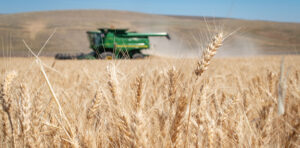
Market success down south
Long-term investment in South America is building demand for Pacific Northwest wheat.

Return on investment
Training and technical support contribute to the growing demand for soft white wheat in Southeast Asia.

She’s going the distance
This U.S. Wheat Associates tech shares her love of wheat-based food with customers interested in all things wheat.
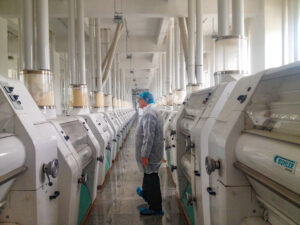
Wheat Life Exclusive:
Peter Lloyd – 3 of 3
Wheat Life Magazine features milling and baking expert Peter Lloyd with U.S. Wheat Associates.
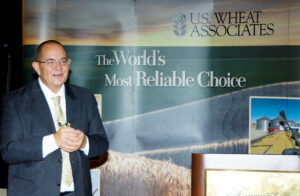
Wheat Life exclusive:
Peter Lloyd – 2 of 3
Bringing attention to U.S. soft white wheat in the UAE takes a milling and baking expert from U.S. Wheat Associates.

Wheat Life exclusive:
Peter Lloyd – 1 of 3
This legend in wheat continues his quest to bring better flour to the world.

U.S. quality pulls demand in South Korea
USW technical expertise boosts
product quality, value for international customers buying U.S. wheat.
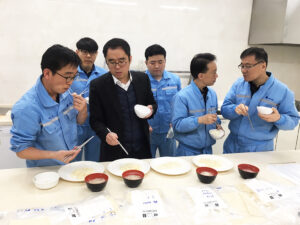
Better bread through science & USW
Wheat Life Magazine features milling and baking expert David Oh with U.S. Wheat Associates based in South Korea.

U.S. Soft White Wheat in the the Philippines
The Philippines is the second-largest market for all classes of U.S. wheat and has been the largest importer of soft white and hard red spring wheat since 2013.

Teaching how to weigh, measure, automate
Wheat Life Magazine features milling and baking expert Adrian Redondo with U.S. Wheat Associates based in the Philippines.

Thailand: Appreciating quality
This Southeast Asian country is the second largest buyer of club wheat.
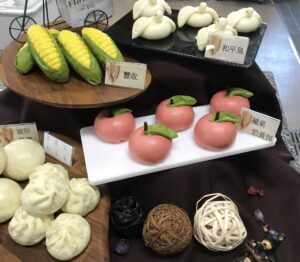
Taiwan: A market mainstay
This island nation is a loyal, long-standing U.S. wheat consumer.

Calling on Colombia
The success of USW Santiago technical activities in Colombia using soft white wheat provides technical support from the milling process to end-product evaluation, and gives clients the ability to obtain flour sourced from the PNW.
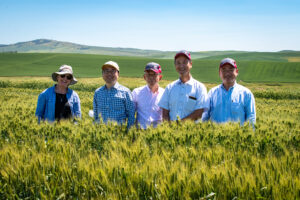
Japan remains a steady buyer
Wheat consumption has remained relatively stable in Japan due to end-product manufacturers.

Growing market looks to U.S.
Trade development activities help feed increasing wheat consumption in the Philippines.
All WGC market development news

Long-lasting connections

Wheat takes center stage at state fair

Going the extra mile

A global perspective

Growers, meet your wheat customers

Washington wheat: A favorite for SW exports

Meeting Mexico’s market needs
